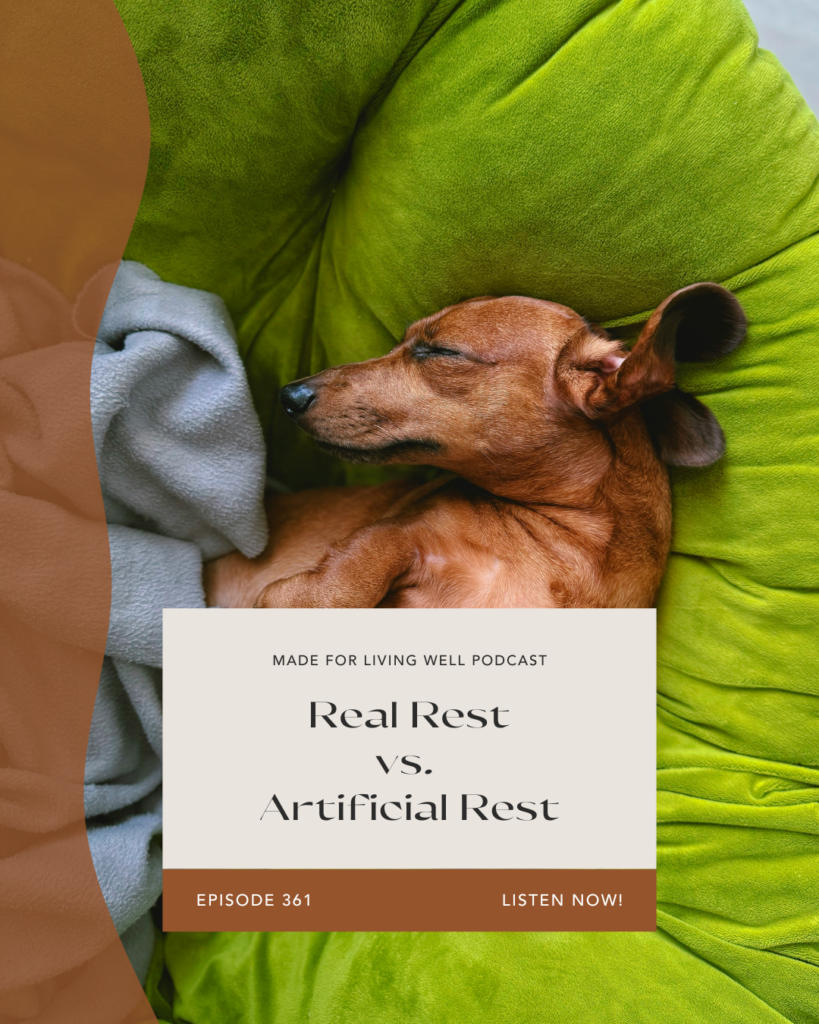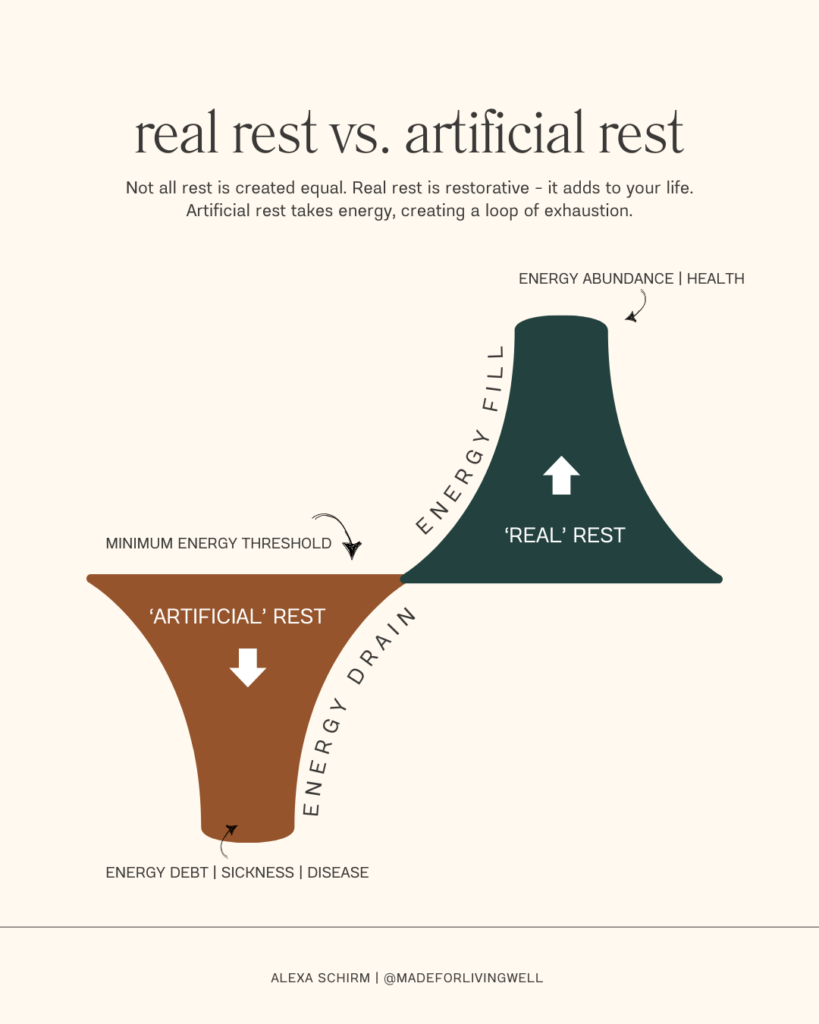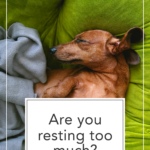
Listen on iTunes | Listen on Spotify | Listen on YouTube | Review the Podcast
Rest is essential. Although you know that, especially now, as we’ve shifted into what some call the “rest era.” Our internal thermostat works tirelessly to maintain balance, or homeostasis, making rest a natural response to work. But now that we’ve moved beyond hustle culture, the question becomes: Are you resting too much, or are you relying on the wrong kinds of rest?
The truth is, excessive rest can lead to problems. Just like overworking, over-resting—especially the wrong type of rest—can leave you feeling stuck, unmotivated, or even more tired. Health is a delicate balance of work and rest, and not all rest is created equal.
Too much rest and not enough work can lead to a bored body. {Find out if your body could be bored here}.
In the podcast, I explain the difference between real rest and artificial rest and how that relates to feeling tired or exhausted. This is an important conversation, especially in a world that nearly worships rest, yet few find the benefits they seek.
Listen to the podcast to get all of the details.
The Exhaustion Epidemic
First, let’s talk about tiredness. Feeling tired is normal and healthy—it’s your body’s way of telling you it’s time to recharge. Like the natural rhythm of seasons, there’s a time for work and a time for rest. But when tiredness becomes chronic exhaustion, it signals deeper imbalances.
Statistics show that the human race is currently facing an exhaustion epidemic. In the workplace, NSC reports show that 97% of workers have at least one workplace fatigue risk factor, and more than 80% have two or more. Many people are so depleted that conditions like chronic fatigue syndrome have become more common, signaling widespread energy deficits.
Why? Two big reasons are at play. One, there is a massive imbalance in mental and physical energy, which has led to more burnout, overwhelm, and fatigue. Two, we’re relying too much on artificial rest and not enough on restorative rest.
Real Rest vs. Artificial Rest
It’s important to note that not all rest is created equal. Not all rest is restorative.

Just like there are natural and artificial energy sources, rest can also be divided into two categories: real rest and artificial rest. Here’s the difference:
Artificial Rest:
Artificial rest may feel like downtime, but it doesn’t truly recharge you. Instead, it often leaves you feeling more anxious, distracted, or restless. Artificial rest is restrictive or suppressive. Common forms of artificial rest include:
- Binge-watching TV shows or movies
- Endless scrolling on social media
- Overeating or indulging in unhealthy foods
- Using alcohol or other substances to “numb out”
- Shopping as a distraction
- Oversleeping or lying in bed all day
Real Rest:
True rest rebalances your body and mind, leaving you energized and refreshed. It nourishes your nervous system and helps you feel truly restored. It’s both a release and a fill. Restorative rest is expansive. It leaves you feeling energized. Examples of real rest include:
- Practicing gratitude or mindfulness
- Sitting outside in the sunlight or nature
- Taking a walk or engaging in gentle movement
- Reading an enjoyable book
- Journaling your thoughts
- Meditating or practicing deep breathing
- Listening to soothing music or nature sounds
- Spending time in meaningful conversation
- Engaging in creative hobbies like painting or crafting
If you feel more drained or wound up after “resting,” it may not be rest. Pay attention to how you feel afterward to evaluate whether it’s restorative.
Walking as a Form of Rest
Walking is one of the most underrated forms of real rest and active rest. It clears your mind, energizes your body, and connects you with the rhythm of nature. That’s why I’m inviting you to join The Summer Walking *Club*, starting June 1st.
This summer, let’s walk together toward better health and balance. It’s a simple way to restore energy, build a healthy rhythm, and experience the power of restorative rest. Registration is open now.
Learn all of the perks and sign up here!
Rest is essential, but balance is key.
Rest is essential, but balance is key. By incorporating more real rest into your life—and understanding when you need active rest—you can avoid exhaustion and rediscover energy.
Feeling tired is healthy. Feeling exhausted is not. If you’re ready to move from drained to energized, start by making small changes to your rest routine and join us for the walking challenge.
Let’s redefine rest and reclaim energy together.
Register for The Living Well Walking Club Here!
